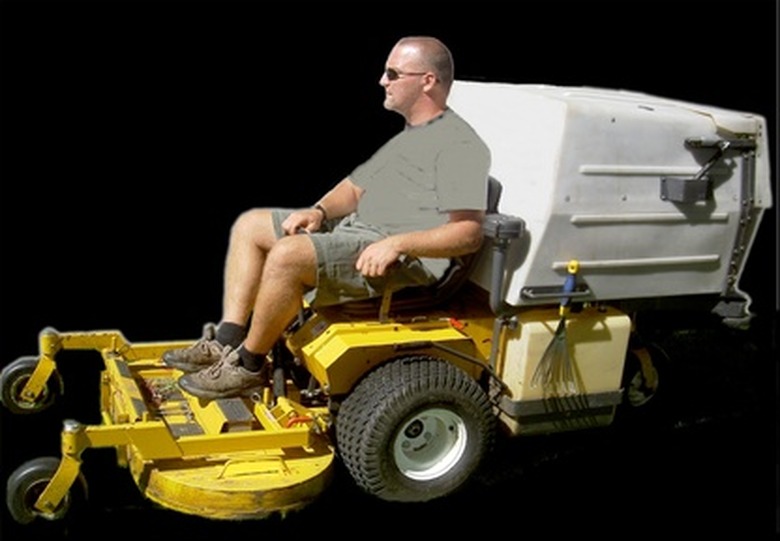How To Test A Lawn Mower Battery
Things Needed
- Multimeter
- Flathead screwdriver
- Pliers
- Rag
- Distilled water
When your lawn mower doesn't start, it can caused by one of many minor or major problems. Most causes are minor, and the homeowner can repair them. One common problem is the battery not holding a charge. You can test and correct this problem in a few minutes with the proper tools.
Step 1
Find the battery of the lawn mower. Look under the seat or behind the engine. Riding lawnmowers can have either option; push mower batteries are located to the rear of the engine if they have one. Check the owner's manual for exact placement of the battery for specific makes and models.
- When your lawn mower doesn't start, it can caused by one of many minor or major problems.
- Check the owner's manual for exact placement of the battery for specific makes and models.
Step 2
Clean the battery before testing. Use the rag to clean off any dirt or grime. Use the flathead screwdriver to scrape off any debris and corrosion on top of the battery, which will help ensure a clean connection between the multimeter and the battery.
Step 3
Identify the type of battery. Find the brand name stamp or plate of the battery, which is usually on top or on one side. Find out what voltage the battery takes. Common battery voltages are 6-volt and 12-volt; most lawn mower batteries are 6-volt. The voltage for the specific battery is listed next to or below the brand name of the battery.
- Clean the battery before testing.
- Use the flathead screwdriver to scrape off any debris and corrosion on top of the battery, which will help ensure a clean connection between the multimeter and the battery.
Step 4
Set the battery charger to the correct voltage. The battery tester is called a multimeter; it has two settings, 6V and 12V on the dial. Set the multimeter to the correct voltage for your lawn mower battery. If your multimeter uses A/C and D/C settings, consult the owner's manual to set the tester to the proper volt setting; most lawn mowers use the 200-volt DC setting.
Step 5
Position the cables. Use the pliers to unscrew the battery cables. Check the battery posts for debris and corrosion; clean off any corrosion with the flathead screwdriver by gently scraping between threads with the narrow edge of the screwdriver head. Put the red cable onto the positive post and the black cable onto the negetive post; the posts are marked with "+" for positive and "-" for negetive.
- Set the battery charger to the correct voltage.
- Set the multimeter to the correct voltage for your lawn mower battery.
Step 6
Read the gauge on the mulitmeter. If the voltage is correct, check all connections and fuses on the lawn mower. If the voltage exceeds or does not match specifications for the lawn mower, continue to the next step.
Step 7
Examine the water level. Use the flathead screwdriver to pry the top of the cell case from the battery cell. Look at the water level at the top of the metal plates in the battery. Fill low water levels with distilled water to the proper levels. Put the caps back on. Reattach the battery to the multimeter, and recheck the voltage. If the battery still does not charge, continue to the next step.
- Read the gauge on the mulitmeter.
- Use the flathead screwdriver to pry the top of the cell case from the battery cell.
Step 8
Look for the fuse next to the battery. Remove the fuse, and replace it with a new fuse. Fuses burn up and can cause lawn mowers not to start.
